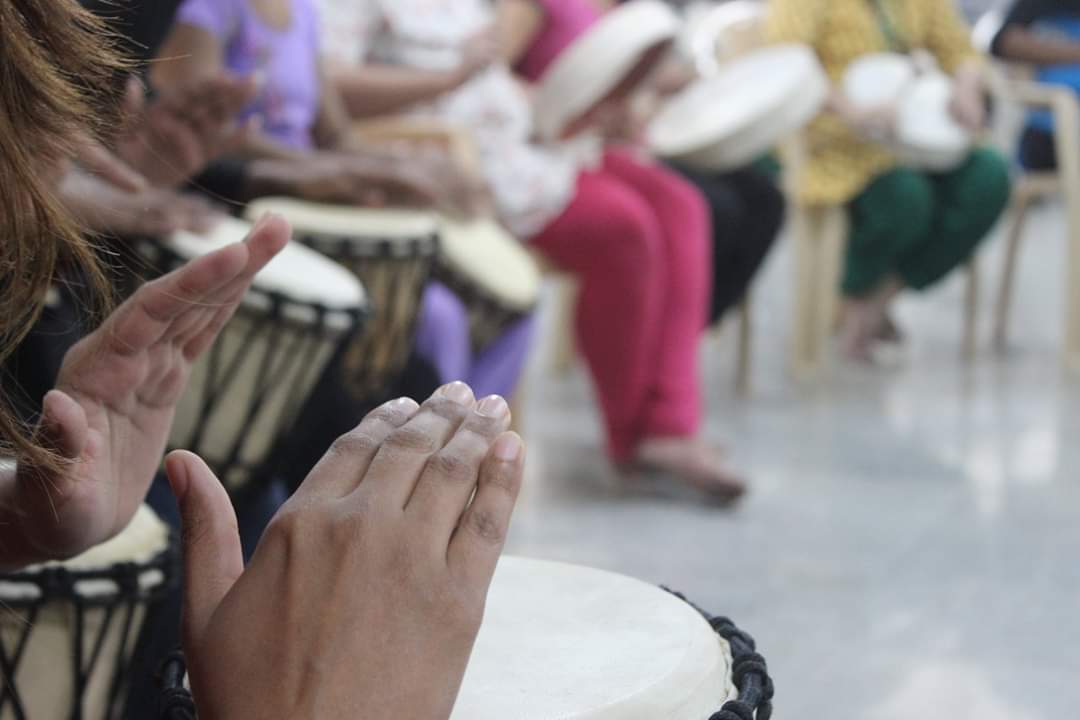In the war between doing and being, much life is trampled. While we’re all tuned to trill out loud about our joys or sing soulfully of our sorrows, we train our voices to be silent or scream incoherently (when we can’t be silent anymore) because we can’t remember to speak from the heart anymore.
Here’s where the arts come in as a healing space, as the point of stillness in the clamour and solace in the storm. Unfortunately, we’re shamed or warned to steer clear of artistic spaces and “do something with our lives.” When we finally decide to seek help (for those of us who do), things inside and outside are breaking down, our voices don’t recognise themselves anymore and work is nothing but a chore.
Bringing back the arts into our lives doesn’t have to be about giving up all our waking hours to playing an instrument or painting. Something even as simple as singing in the bathroom or shaking a leg to a song could become the trigger for healing pathways to open. Arts Based Therapy (ABT) calls out that part of all of us that knows to make art. This is what emerged with clarity during impART’s first ever session offering ABT as a complementary health practice in St. John’s Medical College Hospital (SJMC), Bangalore.
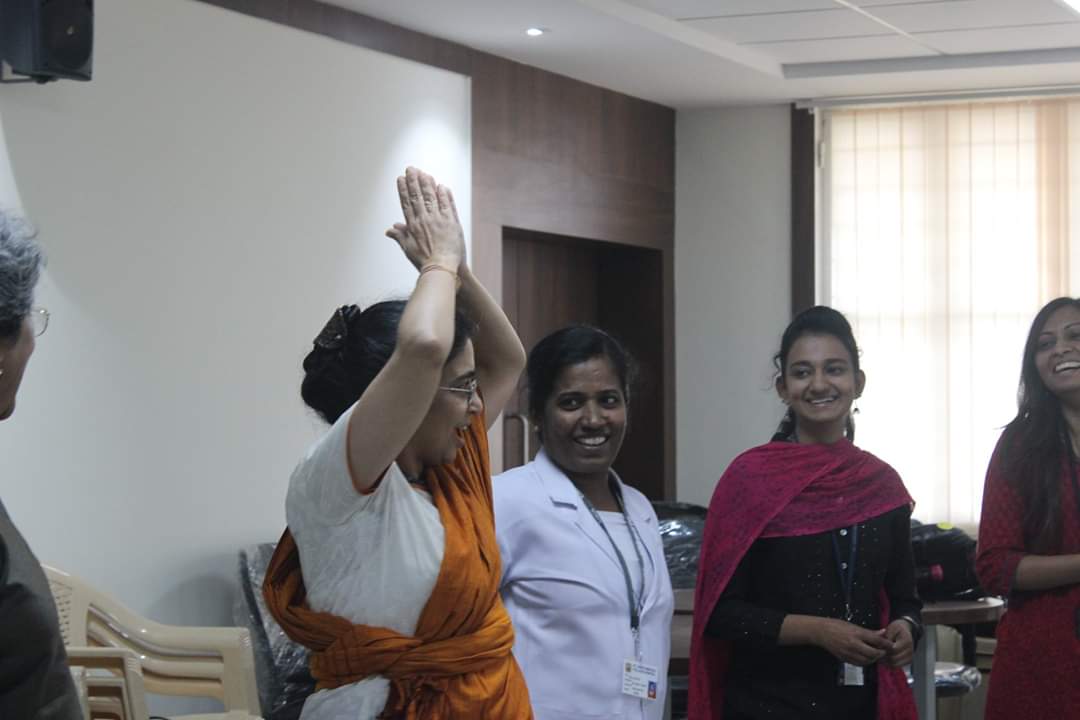 |
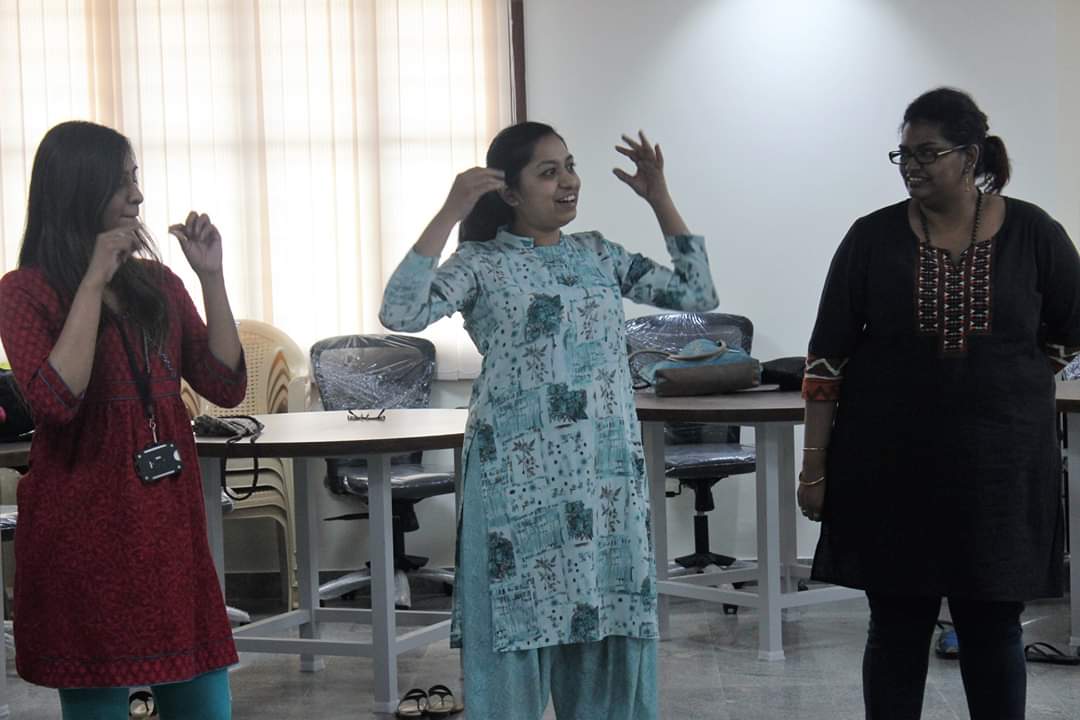 |
Explaining why this session was of great import, Gitanjali Sarangan, ABT educator and seasoned practitioner (Founder and Director of Snehadhara Foundation) says, “We’re working towards connecting ABT practitioners with Medical Practitioners towards building holistic spaces of caring in which the caregivers also receive care or learn how to find solace and stability through the arts.” This will not just make them feel better and enable them to be more efficient, it will humanise the practice of medical care more and create empathetic relationships between patients and doctors.
The high rates of burnout among doctors is not paid as much heed as the public discourse on medical negligence. Experts, who are sought after and plagued with queries and demands even at midnight, what are the stories their minds are imprinted with? How do they feel when they face death, disease and look at the body as cells and secretions on a daily basis? ABT can become the space where they process these stories even if they don’t write or speak of them verbally.
Kannika Bharath Iyengar, a psychologist and ABT practitioner who is researching on autism at SJMC says, “I think ABT can be extremely useful for doctors, nurses and other hospital staff (and not just for patients), as it gives one an outlet for all stress and negative energy that one can get working with people with illnesses. We must acknowledge that doctors take a number of heavy decisions every time they see a patient, give medication, perform surgery, give a diagnosis and this can take a toll in the long run. I do believe that ABT is a great way of relieving this stress and tension that is so routine to a medical practitioner that it has become an integral part of their lives.”
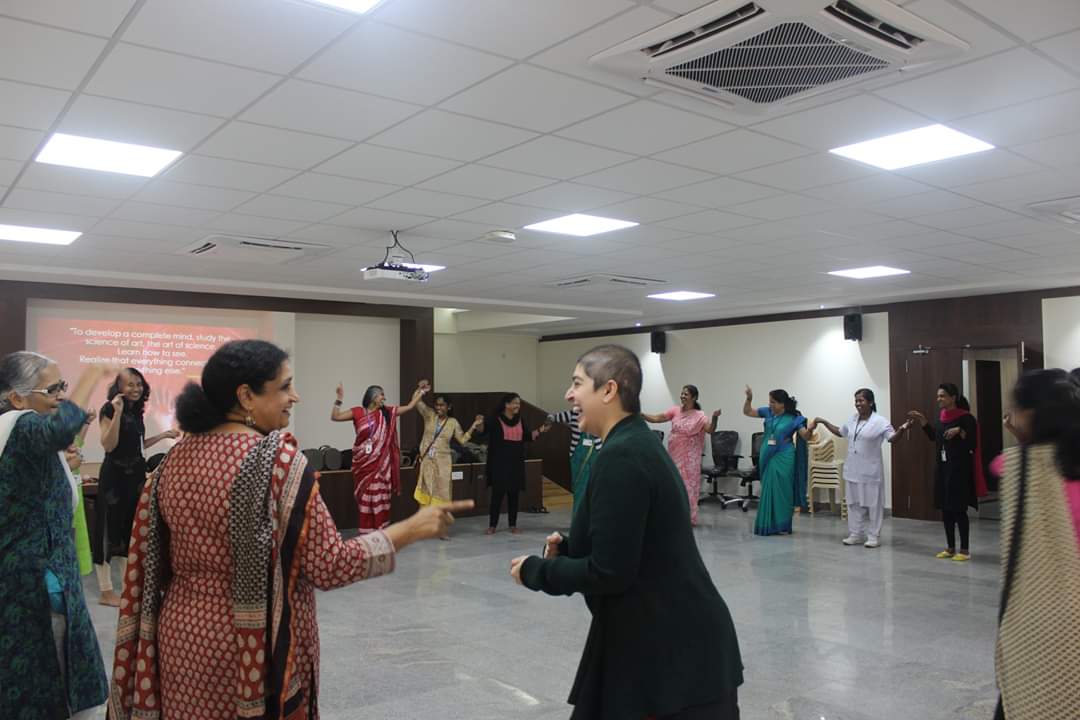 |
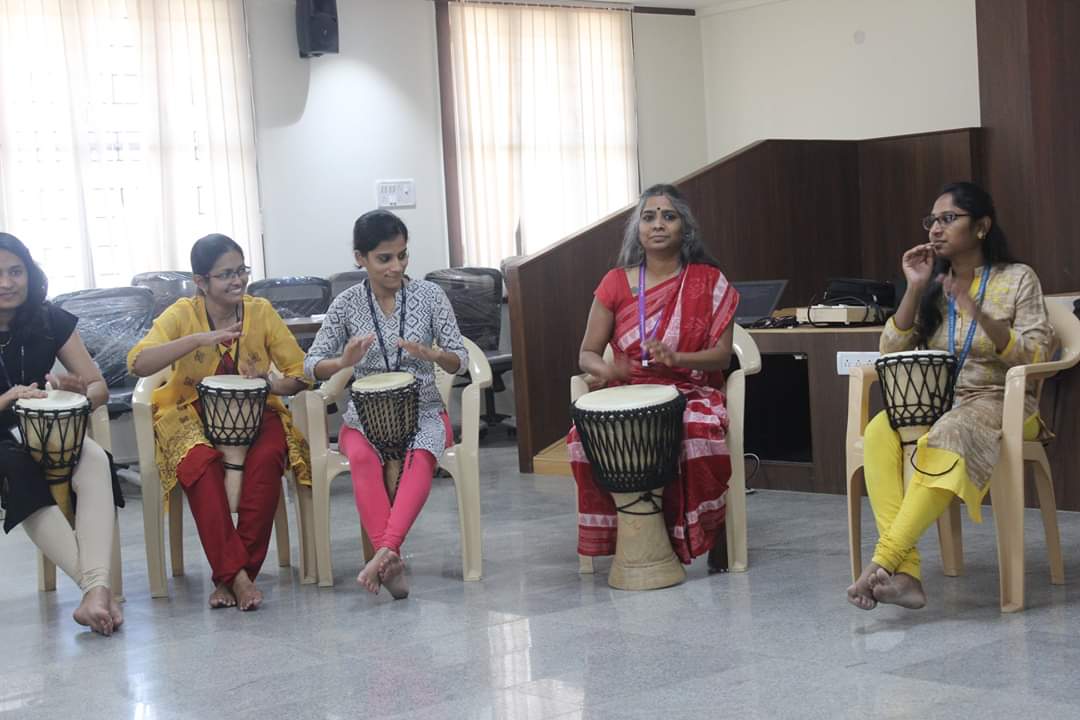 |
Speaking of the sheer power of ABT as a tool to work with people, she recalls an experience of working with a teenager who had body image issues. She had severe problems with her body and “used several art media to help her get in touch with her body. Over several sessions of using various materials to depict her body (clay, straw, stones, colour, cardboard, crepe paper, etc), along with creating narratives and stories on different parts of her body, she was able to get a more realistic perspective of what her body actually is and where she is having issues with it. Finding a solution to these issues was then very simple, as she had figured out where the problems were.”
A 4-yr-old child who had been labelled as “violent” discovered crayons and paper in Kannika’s sessions. “She gravitated towards a box of crayons I had and coloured every sheet of paper she could lay her hands on. I was better prepared the next session and just had lots of colours, paints, crayons kept around the room with large sheets of paper available if she wanted to use them. It was interesting to note that she spent the entire session colouring these sheets, with complete concentration and did not want to do anything else. The same continued for a further two sessions, which is when something completely unexpected happened. The parents came back to report that she had settled down in school and hadn’t hit a single child in over a week (by this point, we had been colouring for two weeks). And through our therapy over the next few months, we never again got any complaints from the school regarding the initial behavioural issues. So what happened to this child? Was the colouring / painting cathartic? Did being given the space to just be herself in a completely non-judgemental way help? I really don’t know the answers to these questions. But what I did realise with this child was that we sometimes need to push aside all our academic training and really listen to what the child needs.”
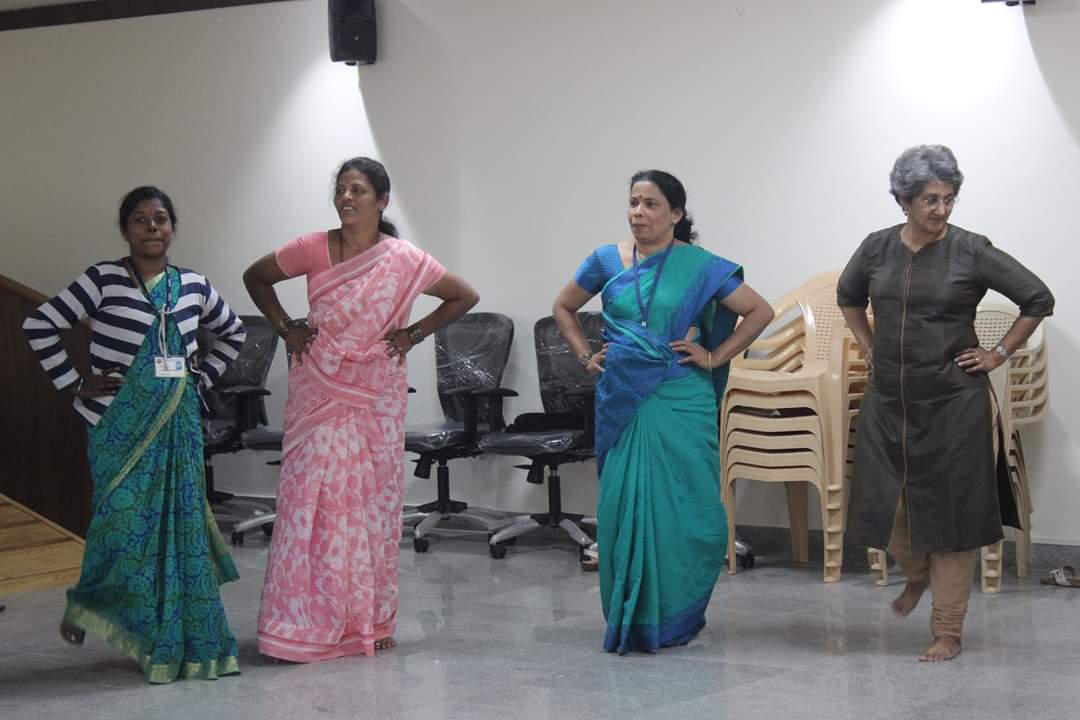 |
 |
It is being widely acknowledged that many mainstream systems of education need to be re-examined. Medical education and practice is becoming introspective and seeking ways to bring back simplicity, clarity and connection. The participants from the Unit of Hope ( a section of SJMC dedicated to working with children with special needs), the Department of Humanities, Speech Therapy, Clinical Psychology, Social Work and many others joyously participated in the programme. They acknowledged their own need for the arts and also shared how useful it could be in their medical practice.
Through the new conversations emerging between the arts and medical practice, we hope that care-givers and receivers of care will find more hope within themselves so healing can flow naturally as a river in full course.
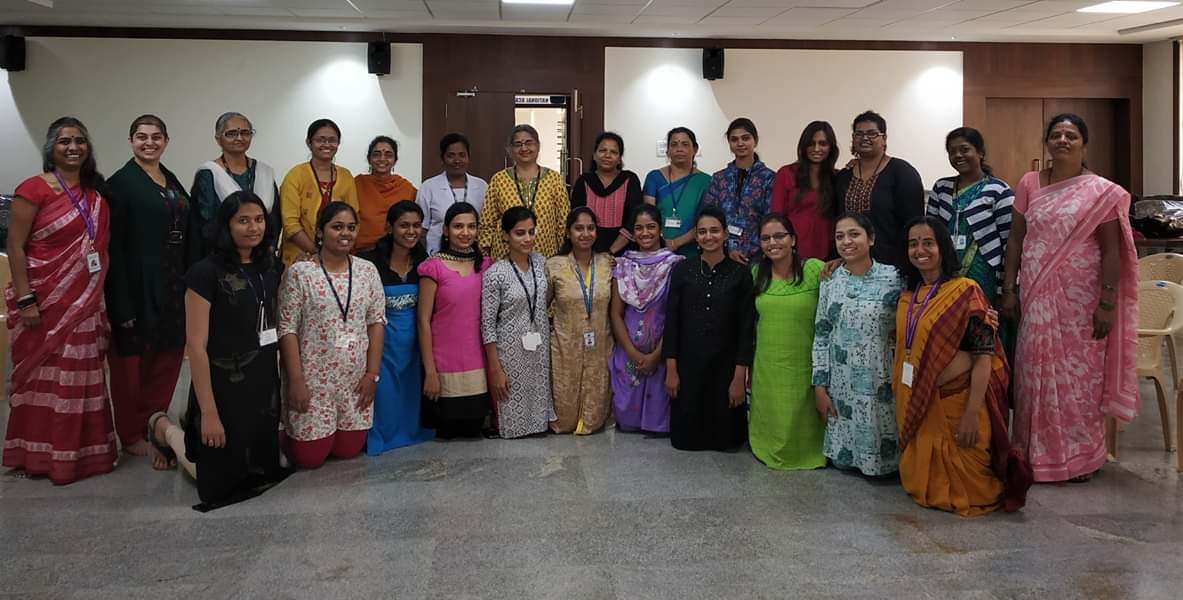 |
For more photos and notes on the session please look at: Facebook

